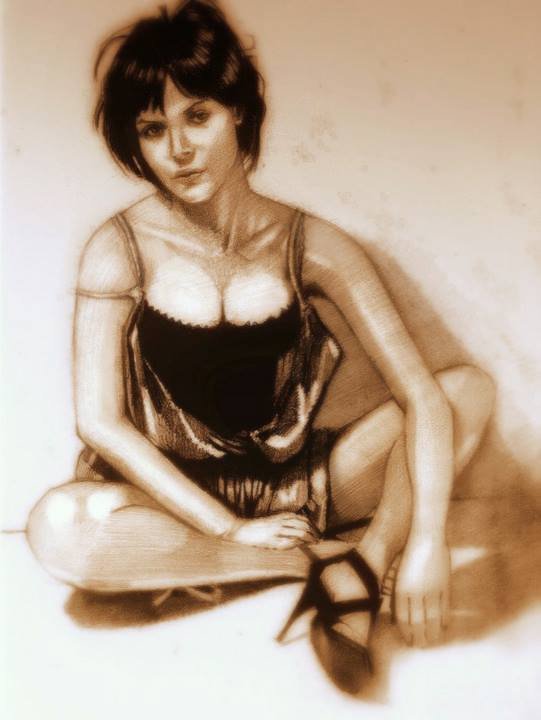
I did this drawing from a photo of Scarlett Johansson
Approaches to Drawing from a Photo Reference
Gridding: Dividing both the reference photo and your drawing surface into equal grids can help you accurately transfer proportions and placement from the photo to your drawing.
Tracing: Placing tracing paper over a printed photo can help beginners understand shapes and outlines. However, this is often discouraged for more advanced artists who want to build their observational skills.
Measuring and Comparing: Use a pencil or ruler to measure key distances and angles in the photo, then replicate those measurements in your drawing. This method is useful for developing a keen eye for proportions.
Freehand Drawing: Drawing without any aids, relying purely on observation. This method is best for practicing observation skills, understanding form, and developing your personal style.
Tips for Drawing from a Photo Reference
Choose the Right Photo: Start with high-resolution images that clearly show the details you want to capture. Avoid photos with heavy filters or poor lighting, as they can distort the subject.
Analyze Before You Draw: Spend time observing the photo before you start. Look at the light source, shadows, shapes, textures, and colors. Understanding these elements will help you make more informed decisions during your drawing.
Simplify Shapes: Break down complex objects into simpler shapes (like circles, squares, and triangles) to better understand their form and structure. This approach helps in capturing the overall likeness and proportions.
Pay Attention to Lighting and Shadows: Notice how light affects the subject, where the shadows fall, and how they define the form. Recreating this accurately in your drawing will add depth and realism.
Use Different Techniques: Experiment with different mediums and techniques, like cross-hatching, stippling, or blending, to mimic the textures and tones of the photo.
Don’t Be Afraid to Deviate: The photo is a reference, not a rulebook. Feel free to interpret, modify, or exaggerate elements to enhance your artistic expression or convey a particular mood.
Practice Regularly: The more you draw from photos, the better you’ll become at recognizing patterns, proportions, and details.
Common Mistakes to Avoid
Relying Too Heavily on the Photo: While references are helpful, copying them exactly can limit creativity and personal style development. Use the reference as a guide, not a crutch.
Ignoring Perspective: Even when working from photos, it's crucial to understand perspective. Make sure your lines and proportions align correctly with the vanishing points and perspective of the photo.
Over-detailing Too Soon: Start with basic shapes and proportions before adding details. This helps maintain the overall accuracy of the drawing.


